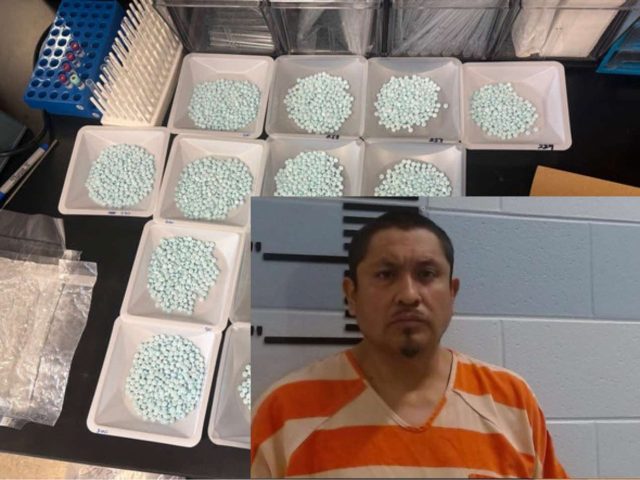
PICKERINGTON, Ohio — A major drug trafficking bust in Pickerington has resulted in the seizure of thousands of deadly synthetic opioid pills, shedding light on the ongoing battle against the spread of dangerous drugs in Fairfield County and across Ohio, according to an announcement Thursday by Ohio Attorney General Dave Yost.
Jorge Santillan, 41, of Indianapolis, was indicted in Fairfield County Common Pleas Court on March 5. He faces charges including first-degree felony aggravated drug trafficking, fifth-degree felony aggravated drug possession, and illegal use or possession of drug paraphernalia, a fourth-degree misdemeanor. Additional charges are anticipated as the investigation by Pickerington police continues.
“This case highlights a disturbing trend: traffickers disguising lethal substances as prescription medication to smuggle them into our communities,” said Yost. “If you’re taking a pill not prescribed by a doctor, you’re gambling with your life.”
Police discovered 3,723 pills falsely marked as oxycodone, along with multiple bags of powder. Lab analysis by the Ohio Bureau of Criminal Investigation (BCI) confirmed that the pills were carfentanil — a synthetic opioid 100 times more potent than fentanyl and 10,000 times stronger than morphine. Carfentanil is typically used to sedate large animals like elephants and is not approved for human use.
Additionally, BCI testing found more than 200 grams of fentanyl and para-fluorofentanyl (PFF) in the powder samples, as well as 55 grams that also included xylazine, a dangerous sedative increasingly found in street drugs.
“Kudos to Pickerington Police Chief Tod Cheney and his detectives for intercepting these deadly substances before they could do irreversible damage,” Yost said. “Fairfield County Prosecutor Kyle Witt has already acted swiftly to bring charges, and our office stands ready to support the prosecution.”
The case also highlights a concerning resurgence of carfentanil in Ohio. After peaking in 2017, the compound’s presence in drug samples declined, but recent data shows an uptick in 2025, with BCI identifying carfentanil in 32 samples so far this year — including items submitted from Fairfield, Franklin, and Delaware counties.
In response, BCI continues to use advanced chemical analysis to detect emerging fentanyl analogs. In February, BCI identified a previously undocumented fentanyl compound, now named fentanyl methylene homolog — a likely product of illicit labs attempting to develop even more potent opioids.
Authorities stress that these findings underscore the critical need for continued vigilance, advanced drug testing, and strong local enforcement to combat the evolving opioid crisis.










